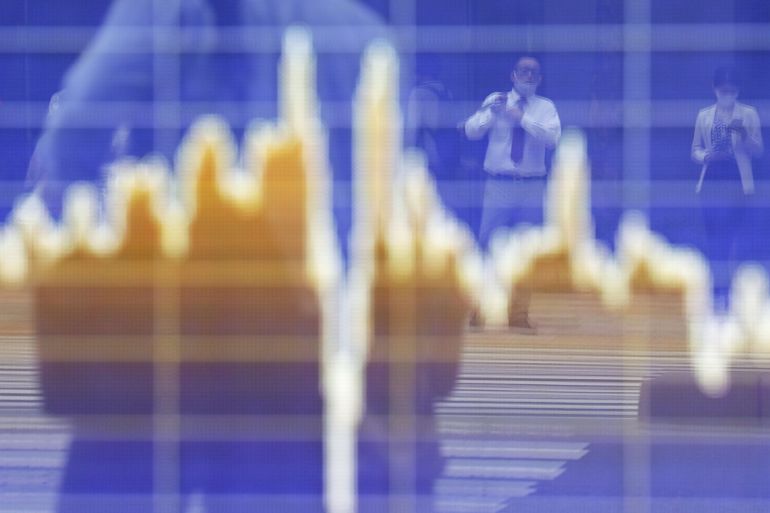Asian shares rally on optimism of global recovery
Bond markets stabilise after central banks across the world assured of economic policy support.

Asian shares rallied on Monday as some semblance of calm returned to the world’s bond markets after last week’s wild ride, and progress in the US COVID-19 stimulus package underpinned optimism about the global economy.
While China’s official manufacturing PMI out over the weekend missed forecasts and grew in February at its slowest pace in nine months, Japanese figures showed the fastest growth in two years. Investors are also counting on upbeat news from a raft of US data due this week including the February payrolls report.
Keep reading
list of 4 items‘Took my first dose of COVID-19 vaccine’: India’s Modi
US authorises Johnson and Johnson’s COVID vaccine
New Zealand’s Auckland in lockdown for second time in a month
Markets were also encouraged by news deliveries of the newly approved Johnson & Johnson COVID-19 vaccine should start in the US on Tuesday.
MSCI’s broadest index of Asia-Pacific shares outside Japan edged up 0.8 percent, after shedding 3.7 percent last Friday.
Japan’s Nikkei rallied 2.1 percent, while Chinese blue chips added 0.5 percent.
NASDAQ futures bounced 1.2 percent and S&P 500 futures 0.9 percent. EUROSTOXX 50 futures and FTSE futures both rose 1.1 percent.
Yields on US 10-year notes came off to 1.41 percent, from last week’s peak of 1.61 percent, though they still ended last week 11 basis points higher and were up 50 basis points on the year so far.
‘A pause for air’
Global bonds have stabilised after central banks from Asia to Europe provided reassurance that policy support remains in place. That helped to pull Treasury yields back from their highest level in a year and put a floor under stocks. Investors have become concerned about the prospect of faster inflation leading to higher interest rates, with traders positioning for the Federal Reserve to start tightening rates as soon as next year.

“The market is testing the Fed and global central banks as to how serious they are here,” Al Lord, Lexerd Capital Management chief executive officer, said on Bloomberg TV. “There are growth expectations and growing inflation concerns, and that’s playing out in the markets.”
Rodrigo Catril, a senior strategist at NAB, added, “The bond moves on Friday still feel like a pause for air, rather than the catalyst for a move towards calmer waters.”
Analysts at BofA noted the bond bear market was now one of the most severe on record with the annualised price return from 10-year US government bonds down 29 percent since last August, with Australia off 19 percent, the UK 16 percent and Canada 10 percent.
The rout owed much to expectations of faster US growth as the House passed President Joe Biden’s $1.9 trillion coronavirus relief package, sending it to Senate.
BofA’s US Economist Michelle Meyer lifted her forecast for economic growth to 6.5 percent for this year and 5 percent next, due to the likelihood of the larger stimulus package, better news on the virus front and encouraging data.
Virus cases were also down 72 percent since a January 12 peak with the number admitted to hospital following closely behind, BofA added.
Riskier currencies
Higher US yields combined with the general shift to safety helped the dollar index rebound to 90.917 from a seven-week low of 89.677.
On Monday, the euro was steady at $1.2086, compared with last week’s peak of $1.2242, while the dollar held near a six-month high against the yen at 106.57.
“Riskier” currencies and those exposed to commodities bounced a little after taking a beating late last week, with the Australian and Canadian dollars up and emerging markets from Brazil to Turkey looking steadier.
Non-yielding gold was still nursing losses after hitting an eight-month low on Friday en route to its worst month since November 2016. It was last at $1,743 an ounce, just above a trough around $1,716.
Oil prices extended their gains before an OPEC meeting this week where supply could be increased. Brent gained 4.8 percent last week and WTI 3.8 percent, while both were about 20 percent higher across February as a whole.
Brent was last up $1.27 at $65.69, while US crude rose $1.22 to $62.72 per barrel.